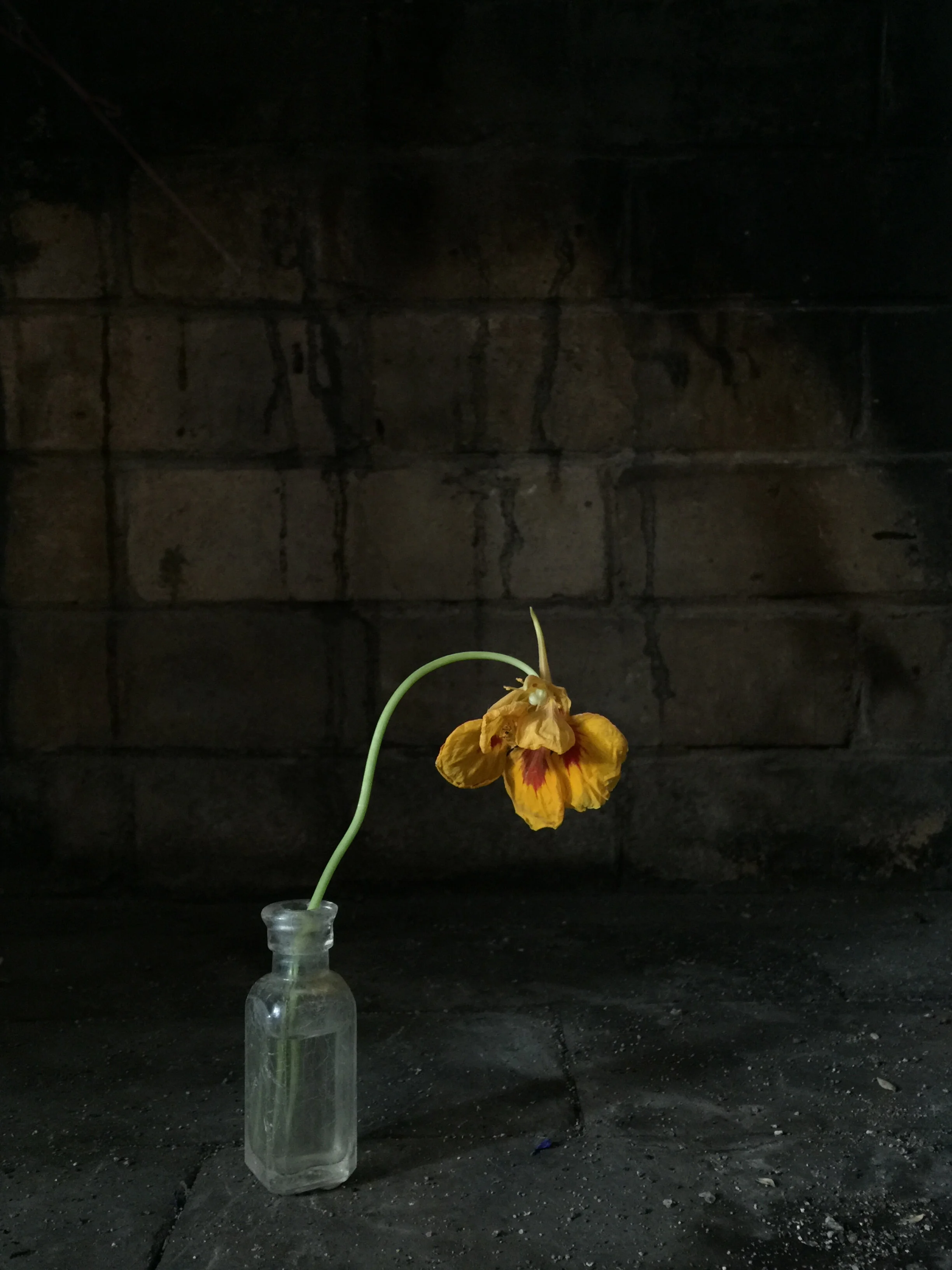The Gardener's Friend — On Tropaeolum
You are a recipient of Coucou Postale, a postcard series designed to engage and delight readers through stories and art using good old fashioned mail and the magic of the Internet.
Tropaeolum — Camden, Maine 2017
Andrew, a pianist who had worked on Mr. Roger’s Neighborhood, introduced me to nasturtiums. One day, while at the bookstore I worked at in my 20s, he brought in a few stems.
“Try them,” he said, smiling as he forced them towards my lips. They tasted as they looked, peppery and bright.
Mississippi marks the first time I ever intentionally ate a flower as an adult. Certainly, as a child, my mother plucked many a bloom from my mouth. Although I grew up with a backyard boasting of sugar cane and blackberries, flowers were not deemed food. They were meant to adorn things, to smell good, and honor people. In Oxford, Mississippi, I would learn otherwise. After nasturtiums, I discovered pansies, a bloom understated in flavor, but bold in decoration. I put them on everything, but especially pies.
Over time, I developed a culinary prowess, earning the acclaim of chefs who would go on to pen armfuls of award-winning cookbooks and carve out careers on television networks. These men — and to be clear, they were all men — had the privilege of dining at my table. Their presence, at the time, affirmed my capabilities, my promise, but above all, they encouraged my botanical curiosity.
These early culinary experiences may be why I planted my first nasturtiums in New England. It was Rhode Island’s worst winter in recorded weather history, which also happened to be an even darker winter of the heart. As my nasturtium seeds germinated in the shabby late-March light, they seemed to resurrect in me a promise of a better, brighter future, one where people happily dined ‘round the table, one where I was in command.
Carl Linneaus divined in the nasturtium its symbol of victory. In naming the plant, he found that its round leaves and bright red flowers reminded him of the shields and helmets of vanquished foes that were placed atop trophy poles in ancient Rome. Rhode Island was no Rome, but as my nasturtiums grew, so did a soaring hope that the darkness would lift. And it did.
Winter vanquished, I moved the seedlings to pots that lived on sea air and my unwavering attention. My plants grew, at first as tangled green tendrils, then festooned with round, saucer-sized leaves, and vermillion blooms. I ate the first flower that opened up the same way I eat the consecrated host — with reverence. Nasturtiums brought me into communion with the forgotten self that was empowered by feeding other people. As summer pressed on, nasturtiums were a staple of my diet and others too. “Remember, that meal you made for us after yoga,” a woman who I recently reconnected with reminded me of the flower feast I shared with her on summer in Rhode Island.
A native plant of South America, 16th century Jesuit missionaries reported that it was a staple of people’s diet. In the same era, herbalist John Gerard, noted the plant’s use in salads in the West Indies, earning it another nickname, “Indian cress.” I added its leaves to my salads, too, but I envisioned a richer, more modern tableau. Omelets popped with blossoms and a curry heralded its spicy petals when I was short on pepper one day. Perhaps, after all, the bloom did add an air of conquest to the plate.
In autumn, my nasturtium retreated into a brown, dry heap around the same time I retreated from New England. A couple of years passed, and on an evening walk during my honeymoon in Maine, I found a lone nasturtium blossoming on the precipice of a garden wall. This one was yellow, a bright star in the night, and a symbol of the new life I was going to build with my husband. I took the flower back to the house we had rented.
The next morning, I wanted to photograph it, but none of the light seemed to capture both the fragility and the strength the flower possessed. Then I spied the fireplace. Unlit, the windows cast dark shadows in its corners, which in contrast to the canary yellow of the bloom, provided the perfect visual metaphor. The bent neck of the plant vaguely resembled me as I was embarking on this new journey as someone's wife. I was equal parts strong and uncertain. Would I be successful in this new campaign? I wasn't sure, but like my flower, I radiated hope.
Soon after, we set off for Vietnam, where we would reside for the next two years. The following Christmas we stayed in Dalat, the flower capital of the country, where every other year, a flower festival is held. We rented a house on the outskirts of town. While walking to the town's center, we came upon a steep embankment covered in a multitude of nasturtiums in shades of vermillion, gold, and bronze. At that moment, I had a revelation: The truest victory to behold is the communion that all plants have to offer. I bent down to gently pluck a nasturtium, then placed its wafer-thin mass into my mouth, just as priest does at Eucharist. —GF

